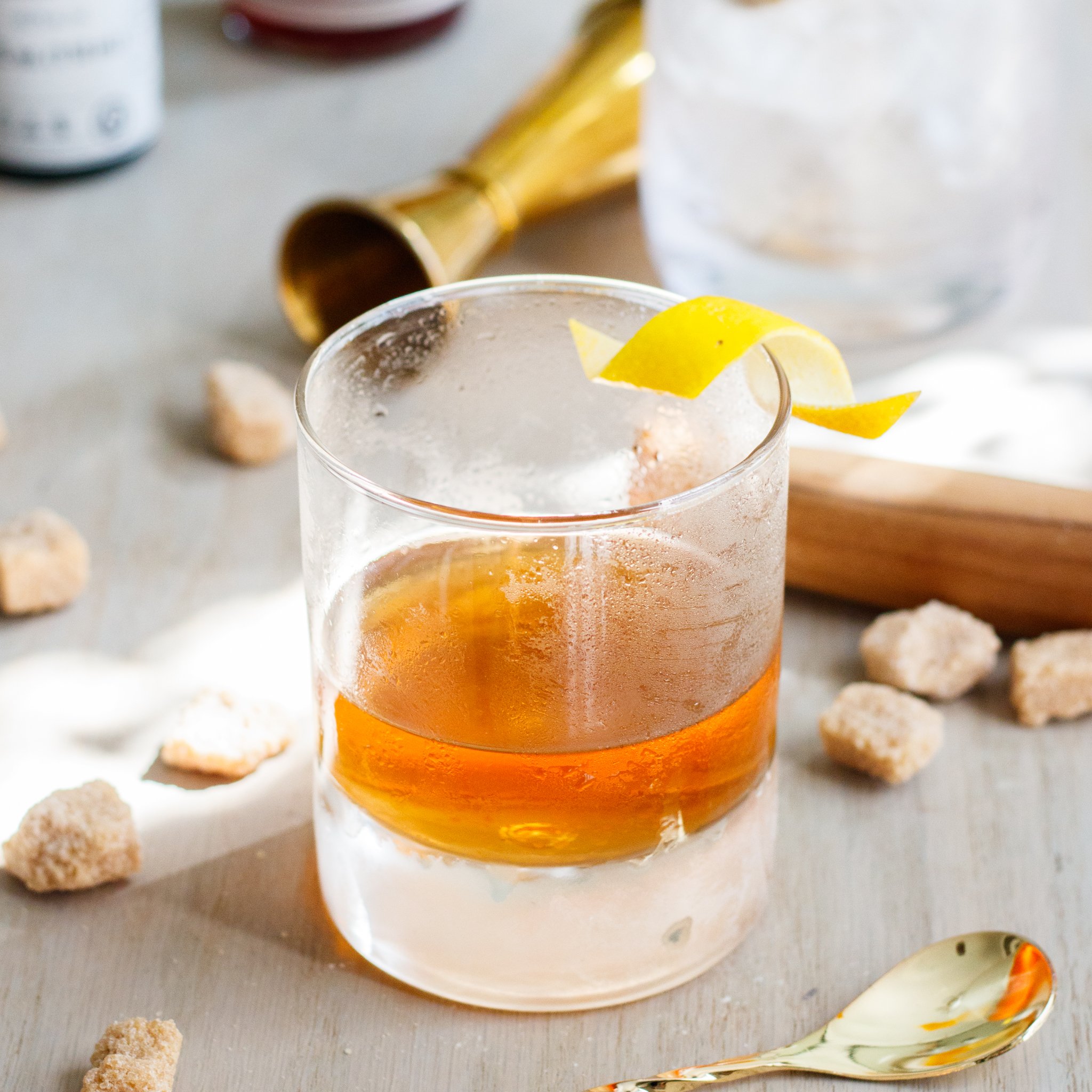1/4 ounce absinthe, or anise liqueur
1 sugar cube
3 dashes Peychaud's Bitters
2 ounces rye whiskey
Lemon twist, for garnish
Add absinthe to a well chilled old-fashioned glass and swirl it around to coat the glass. Discard any excess absinthe that pools in the glass.
In a separate mixing glass, soak the sugar cube with the bitters and muddle to crush the cube.
Add the rye whiskey and plenty of ice and stir for about 30 seconds.
Stain the cocktail into the absinthe-rinsed glass.
Gently squeeze the lemon twist over the drink to release its oils. You can use it to garnish the rim, but traditionalists say it should never be dropped into the actual cocktail.
The Sazerac is New Orleans most famous cocktail, and some people claim it’s one of the oldest American cocktail recipes ever recorded. There are two origin stories, but both of them involve a now defunct brand of cognac, Sazerac de Forge et Fils, and a pharmacist and Creole immigrant named Antoine Amédée Peychaud, who invented Peychaud’s curative bitters.
One story has it that the owner of a New Orleans bar, originally called the Merchants Exchange Coffee House, started importing Sazerac cognac and changed the name of his bar to the Sazerac Coffee House. He created a cocktail by adding absinthe and a locally produced cocktail bitters to his imported French cognac, and the rest is history.
The other story says that Antoine Peychaud invented the cocktail himself as a way to boost sales of his medicinal bitters. Either way, we know the Sazerac was invented in New Orleans sometime between the 1830s and the 1850s, and we know that in the 1870s, when phylloxera almost completely wiped out France's wine and brandy production, the cognac in the Sazerac was replaced with American rye whiskey, which remains the main ingredient in the cocktail today.
Along with Rye whiskey and peychauds bitters, the Sazerac also contains a sugar cube and an absinthe rinse, though other anise flavored liqueurs were used when absinthe was illegal in the US.
This classic wasn’t just popular in the mid-nineteenth century though. In the late 2000s, at the height of the cocktail culture resurgence, many bartenders were moving backward from prohibition era cocktails to even older recipes. Not only were old fashioned cocktails making a comeback, so were old fashioned spirits like Rye whiskey. Before the mid 2000s, the majority of American whiskey drinkers preferred Bourbon, but in their quest for balance and flavor, mixologists discovered that the dry spiciness of rye made for better mixed cocktails than the sweeter bourbon. Between 2007 and 2008, sales of Rye whiskey spiked by 30 percent.
Also, In 2007, the nearly century old ban on Absinthe in the United States was finally overturned, so absinthe suddenly flooded the bar scene in the United States.
Suddenly all the high-end cocktail bars in the country had both absinthe and rye on their menus, and they make up two out of four ingredients in a Sazerac. Ten years earlier the Sazerac was almost completely forgotten outside a few specialty bars in New Orleans, but thanks to cocktail historians like David Wondrich, by 2007 it was on cocktail menus across the nation. In 2008, the Louisiana Legislature voted to make the Sazerac New Orleans’ official cocktail, and by 2009 it was everywhere.
Some bartenders prefer to use an anise flavored liqueur rather than absinthe, and some prefer a mix of peychauds and angostura bitters rather than peychauds alone. But almost all bartenders agree that a Sazerac should always be stirred, never shaken, and should always be served without ice in an oversized rocks or old-fashioned glass.

